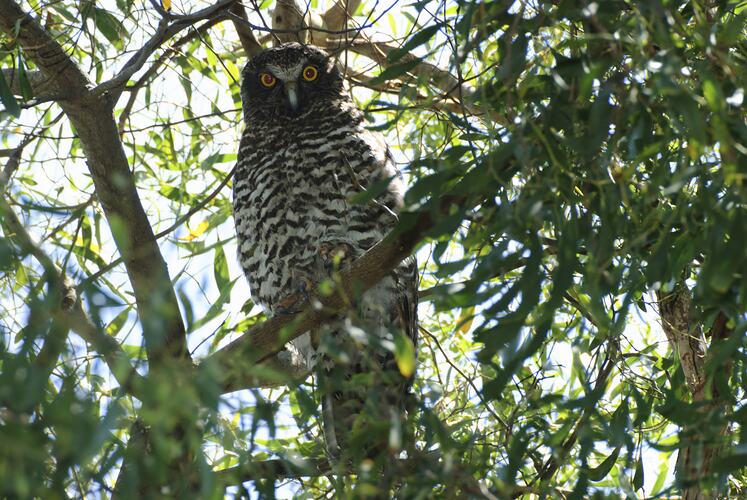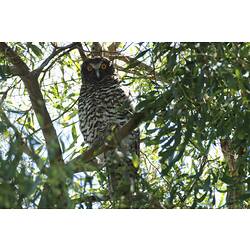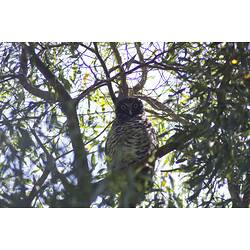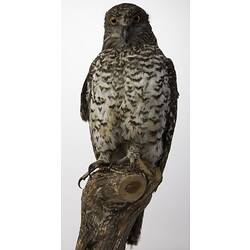General Description
A large owl with a rounded tail and small head. The upper body mottled dark grey-brown with white barring. Underparts white with characteristic grey-brown V-shaped marks. The large eyes are yellow. Bill light grey. Legs are feathered with large, sharp talons. In young birds, head is white and underparts are lightly streaked. Body length of adults is up to 65 cm. Call a distinctive low frequency two-note "whoo-hooo".
Biology
Powerful Owls mate for life and establish permanent territories that the pair defend all year. They require hollows in large, old growth trees to nest in. They are commonly found next to watercourses and are most active at night. Typical clutch size is one to two eggs. Males provide food to the female and chicks during the nesting period. Chicks remain with their parents for several months after they fledge and can stay inside their parent's territory for a year. Powerful Owls hunt by swooping down from trees, snatching prey with their talons. They commonly prey on medium- to large-sized tree-dwelling mammals including possums and gliders, but also birds, rabbits and small ground-dwelling marsupials. Prey items can be slung over tree branches and held by their strong talons while they roost during the day. Powerful Owls are the largest owls in Australia.
Distribution
Eastern and south-eastern mainland Australia.
Habitat
Open woodlands, forests, farmland and urban parks.
More Information
-
Animal Type
-
Animal SubType
-
Brief Id
Large owl with yellow eyes and mottled brown appearance made up of bown "V" marks on underside.
-
Colours
Brown, White, Yellow
-
Maximum Size
65 cm
-
Habitats
-
Diet
Carnivore
-
Endemicity
-
Commercial
No
-
Conservation Statuses
CITES: Trade restrictions (Appendix II), FFG Threatened List: Vulnerable, EPBC Act 1999: Not listed, IUCN Red List: Least Concern
-
Taxon Name
-
Common Name
Powerful Owl
-
Kingdom
-
Phylum
-
Subphylum
-
Class
-
Order
-
Family
-
Genus
-
Species Name
strenua





